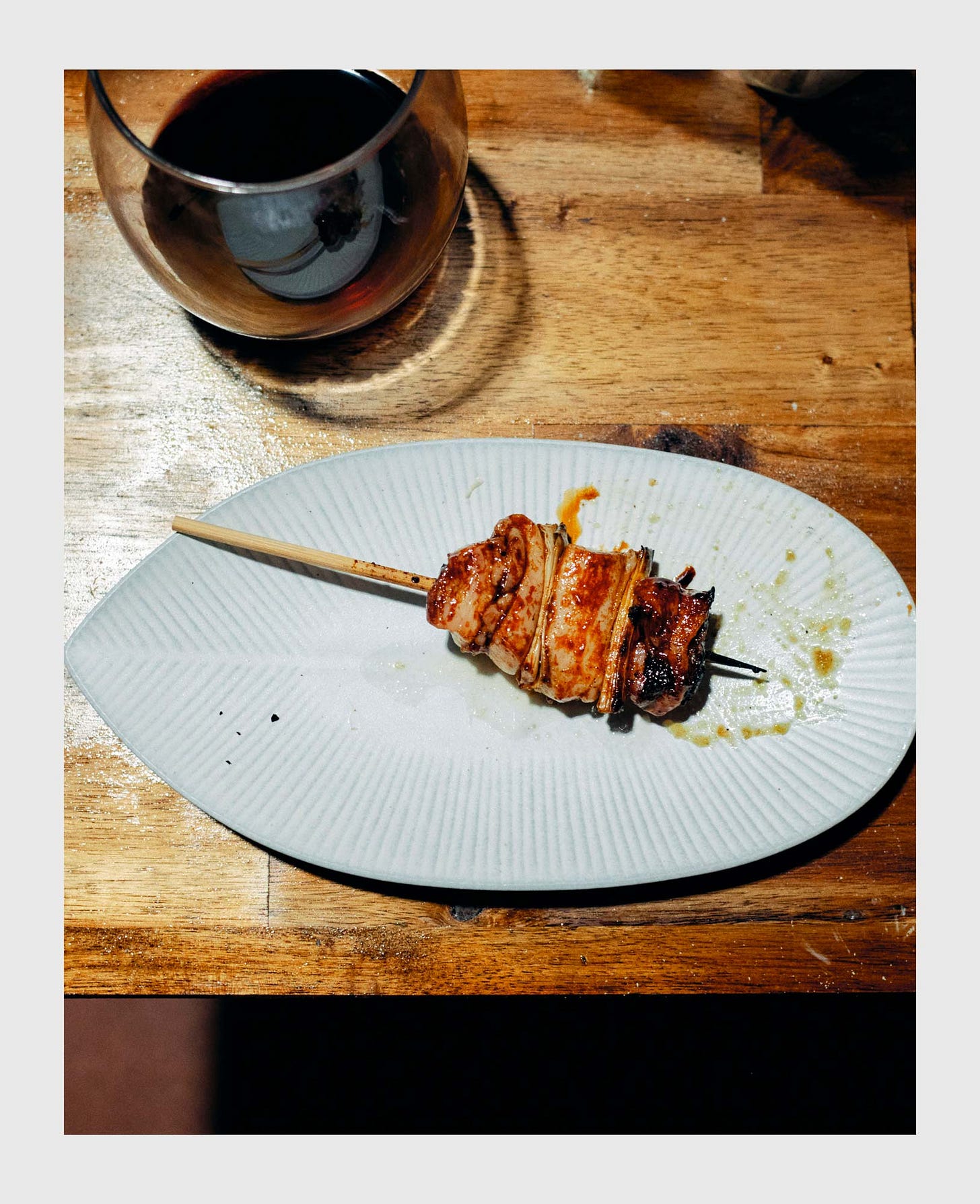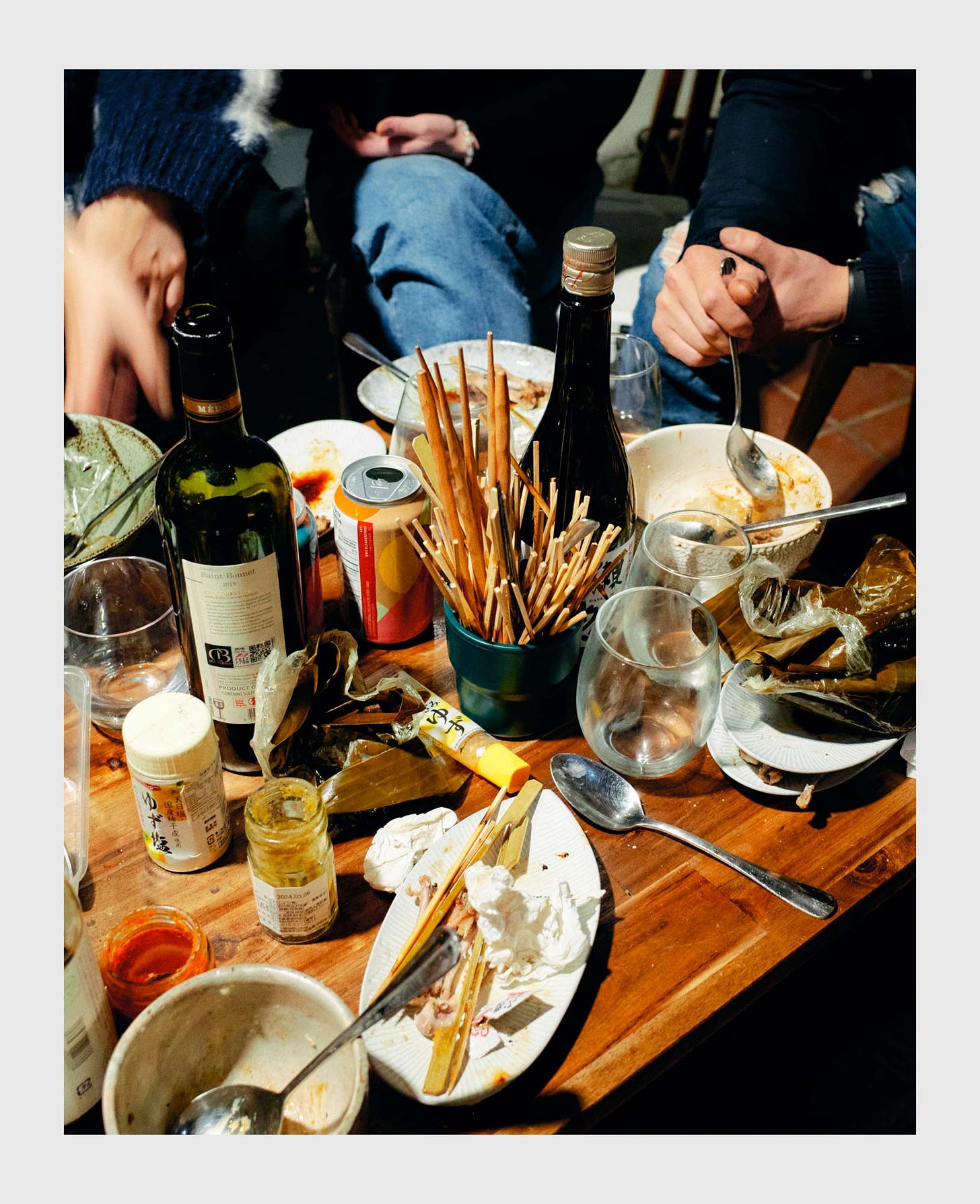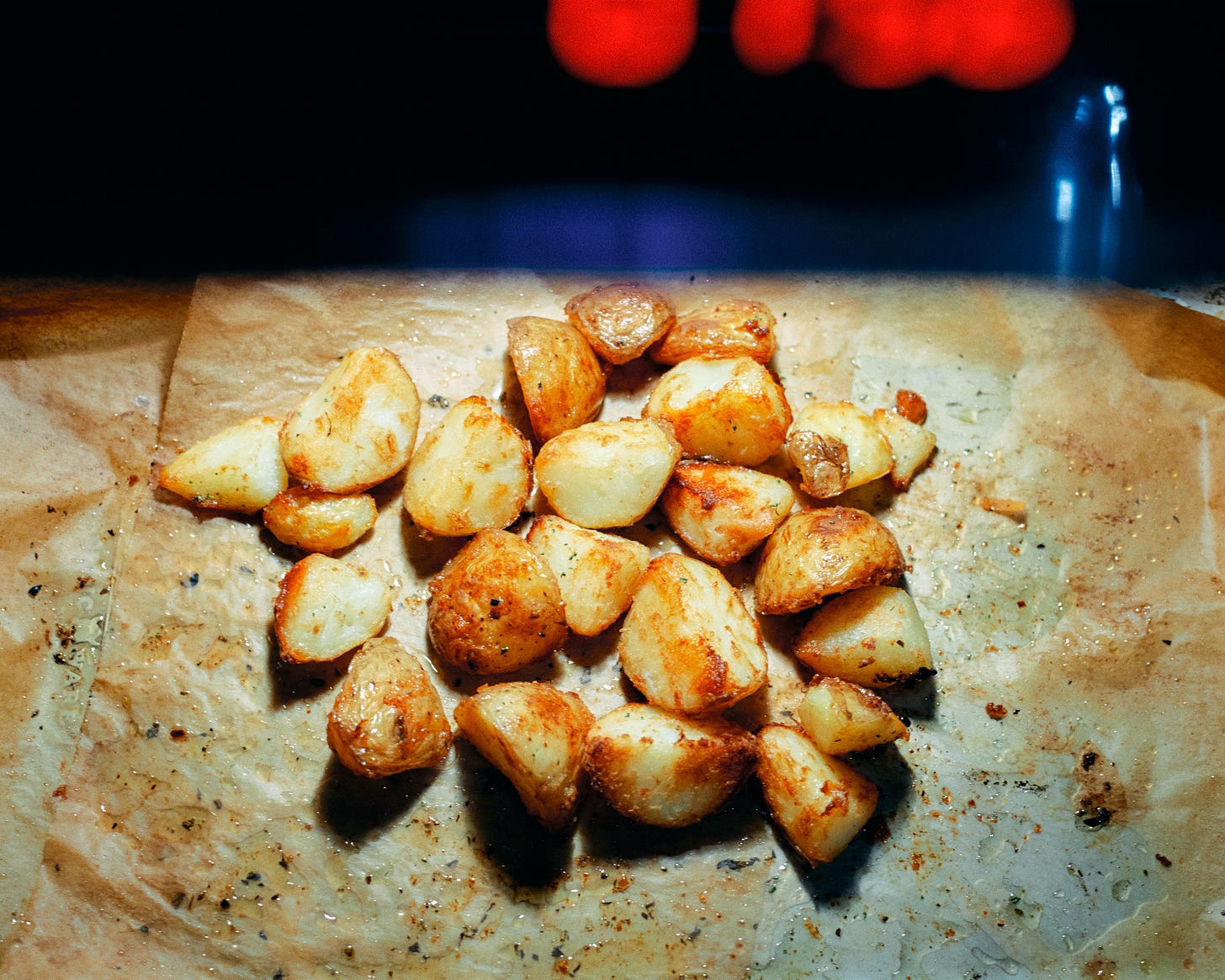I'm here. What do I do? What's your secret code?
I texted. Silence.
A slight panic.
I have a theory about why street hawker food - the real ones, not the ones in a shopping mall - is so memorable.
When I was younger, sitting amongst a sea of plastic tables and chairs open air, with sticky armpits, fearing someone might just come and knick the Nokia 3310, pushing adult pirated DVDs, and asking for donations, created this discomfort, this anxiety that makes you shout internally - WHERE IS MY FOOD?
Rats carrying the plague, birds carrying flu, stray dogs with rabies, and drug dealers lurking in the shadow.
When the food came, be it char kuey teow , chicken rice, hokkien noodles, popiah, or fishball noodle soup, you go to town.
And we wonder why all these faux street food pop-ups in your first-world 'night markets’ with air conditioning, quality control, safety check, and licensing are lackluster.
Always missing something, you say to your partner.
Fear, danger, and the possibility of harm.
A sense of adventure.
That's what's missing.
Fear might be the mind-killer, but it also shuts your brain up and enhances your stimuli.
'Hahahahahaha, see the glass door with the stairs? I'll be there soon," said the chat bubble.
And only when I saw the host walking down with an apron, and sweaty hair, that I exhaled some relief.
This is not a trap.
My kidneys live another day away from the black market.
“What a day, Harvey. What a fucking day,” said the host. “I did all the prep yesterday until 2am, and thought I could take it easy today, but this morning the sink decided to get clogged so that fucked up all my plans. How you been bro?”
Last week I received an invite - it's going to be on a Sunday evening, ditch your family, and don't drive, uber it because the payment is a bottle of alcohol per person.
I can't reveal his name, but I can reveal that this hush-hush gathering, all this hard work, is for a private yakitori gathering on a balcony in <suburb redacted>.
I was the first to arrive, but not too long later, a French chef, a couple who works in retail E-commerce, a Korean chef and his partner soon entered. I recognised one of them.
They hugged and high-fived each other, revealing that it was not their first yakitori rodeo. And I, I was the only virgin, staring at the table awkwardly.
“Actually I followed your work on Subtle Asian Cooking,” another person said.
Great, awkwardness plus embarrassment.
It's really been a long time since I was out on a Sunday night, socialising with new friends while basking in the full moonlight on the balcony overseeing the street. The smoke coming out from the ogatan charcoal caused by the sudden burst of chicken fat just took me out of Melbourne. This was Tokyo, Ho Chi Minh, Melacca, Guang Zhou.
We started with the thigh.
Before we continue, I should say I'm a yakitori novice.
My wife, she should've been there.
Once, we had a booking at a 1-star Michelin yakitori place in Kobe, but because I had bronchitis, we had to cancel. I remember it vividly because she. reminds. me. of. it. constantly.
Would you lose a partner for an unforgettable yakitori experience? Sounds like she's the type that would pick yes given the choice again.
And you can't blame her.
For the Japanese, yakitori is a craft.
Aussies throw a slab on the barbie, the Japanese, they utilise every part of the chicken, down to the soft bone, the tendons, the innards, the knuckles, to be skewered individually on sticks on slowly cooked over a charcoal fire.
Now you may ask why bother with different chicken parts? Why not just focus on the juiciest thigh and call it the day?
The answer is flavours, textures, mouthfeel.
Even though they came from the same chicken, they vary.
If you really love chicken, you will eat it unconditionally.
Especially its heart.
This was like the ortolan bunting where diners cover their heads with a towel to disguise the shame of the cruelty.
It's barbaric, yet strangely respectful.
So yes, for them, eating yakitori live, not the ones you buy from convenience stores, is reserved for special occasions.
We had the heart, the oyster1, negima (the thigh with spring onion), the neck, the upper thigh …
The host would slowly rotate the sticks, dip them in the tare sauce, back on the charcoal. Some with only salt. Some we season with yuzukosho, or sichimi, or sansho.
The neck. To make one stick you need four chickens worth of neck meat, so to serve seven that’s twenty-eight chickens. The host had to clean and scrape the meat off the bones. Knife skills and intensive labour are the bare minimum.

I was photographing the flames and the host said “flaring is not a good thing, Harvey. When it flares it means the temperature will become inconsistent. You gotta move the sticks away, let it calm down, and move it back.”
He used a word to describe what I assumed was 'bad texture' but I was kinda tipsy so cut me some slack. (Sappy? I think it was sappy.)
I swear, he spent thirty minutes on the chicken skin.
There was a conversation between two vapers about how vaping is so bad, so much worse than cigarettes. Not as ironic for most of us who probably inhaled a pack's worth of secondhand charcoal smoke.
At some point, there were stories about sliced fingers while sharpening knives, with meat hanging down the bone.
Bitching, we loved bitching about restaurants. Long queue for croissants, $15 onigiris, $6 coffees.
Worst customer experience. That was me. I asked the chefs, the couple working in retail to share horror stories.
Most of the time though, everyone was pushing the host.
When are you going to open? When are you doing a pop-up?
“Nah, man, not gonna happen. How much do I charge? How much will people pay?” he said.
Sure you can, just work out the hours and crunch the numbers.
“No no, he's an artist. You can't use hours and minimum age to calculate art,” said the French chef.
He was right.
“Harvard, you're the food writer, what's going to be the next trend?”
I almost spat out my daiginjo. Me, a writer lol
“Filipino cuisine,” another person said, literally saving me.
I thought to myself: the next trend, the next big is going to be something like this gathering.
An intimate, exclusive experience that isn't scalable, and can't be streamlined.
The anti-trend.
“Man, I feel like some noodles,” said one.
“Yea something clean, like udon or something.”
I can do it.
“Harvey! Really? You gonna cook?? YES YES YES!” The host squealed.
Did I say that out loud? Shit.
“Yea sure, what do you have? Can I have a look at your pantry?”
“Fuck yea! Do whatever man! I have a pot of stock made from leftover chicken bones.”
“Really? Udon should be in proper dashi, no?” Said the partner. No point guessing where she's from.
“I can do both”, I said.
So cut to me, standing in a stranger's kitchen.
I made a pot of dashi using two dashi packs, a dried shiitake (should've been rehydrated earlier), and a handful of katsuobushi while softening the frozen udon using kettle-boiled water. Since the sink was blocked, I drained the udon using the toilet sink.
For the base seasoning, I McGuyvered with soba tsuyuu, soy sauce, mirin.
Two bowls of traditional udon for two couples.
In the second variation, I used the host's chicken stock, seasoned with a bottle of Korean seasoning that contains garlic and fish sauce, more fish sauce, and squid sauce. Third couple sorted.
The French chef and I, we got the W soup. A mixture of dashi and chicken stock.
It was like an impromptu Jazz mash-up. I was the saxophone player crashing a Marc Ribellet set.
And to get chefs complimenting it, asking what I did with it, was nothing but amazing.
Then again, you should know that real chefs always appreciate when others cook for them. The critics are always the assholes, and vice versa.
As I put out my imaginary cigarette, I took a sip of my sake, and it tasted like chicken smoke-infused alcohol.
To end the course, the host made rice wrapped in bamboo leaves with chicken mince. The Korean chef improvised with yakitori tare as the sauce.
Dessert was an ice cream cake, and everyone dug in with their spoons. No plates. No one made a fuss about catching viruses.
I woke up so early the next day and made lamb cutlet and duck fat roasted potatoes for Hana's bento. And then after school drop off, a full Japanese breakfast - miso soup, tamagoyaki, pickles, and rice for Chika.
That’s how much fun I had.
I vaguely remember the host discussing what other ways he could end the course. Noodles? Rice?
Proof that he is thinking about a proper menu after all.
To make it work. Available to the public.
One can only hope.
The French calls chicken oysters - the little pocket of meat attached on both side of the backbones, on top of the thigh - sot-l’y-laisse. Translated as ‘a fool leaves them’.











I really, really enjoyed this.